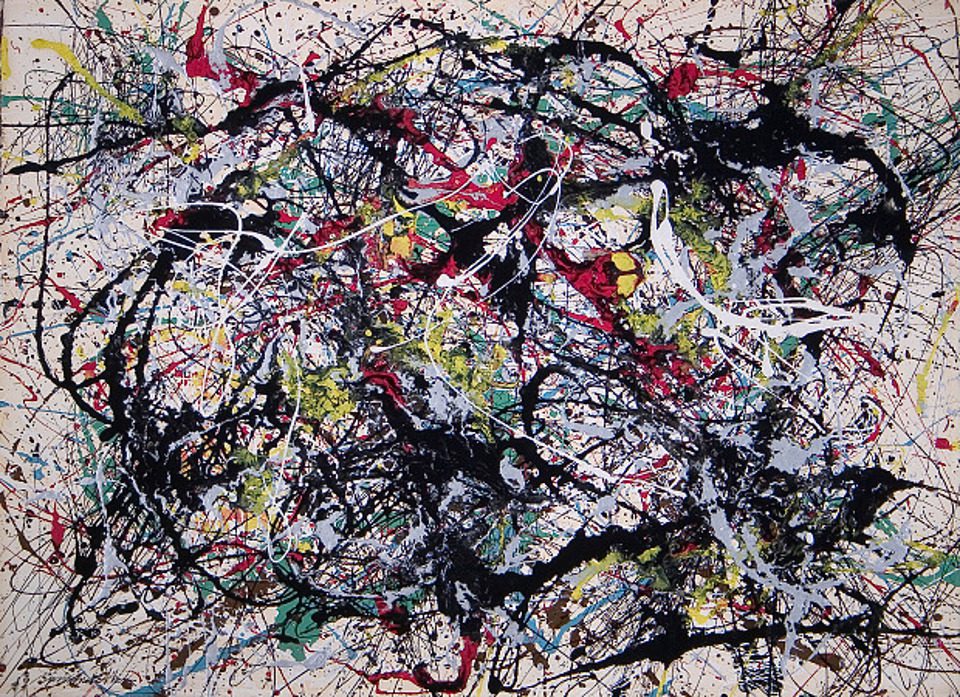The first exhibition in over 30 years to survey the later works of Jackson Pollock, one of the most provocative American artists of the 20th century, focuses on the lead up to and the creation of the black pourings made between 1951 and 1953 – a highly influential period of the artist’s career.
These works follow on from Pollock’s abstract action paintings which saw the artist drip brightly coloured paint onto canvases laid flat on the studio floor, and are far lesser known yet just as intriguing as these early, pioneering works. The exhibition follows Pollock’s practice through a selection of these drip paintings made between 1947 and 1950 to his late blind spots, demonstrating a radical juxtaposition between two distinct periods within his work.
The black pourings were first exhibited at Betty Parsons Gallery, New York, in 1951; a series of black enamel and oils, they have been described by art historian Michael Fried as bringing the artist to “the verge of an entirely new and different kind of painting … of virtually limitless potential.” In these black pourings, figuration begins to return to Pollock’s work – after years of bright abstraction – and the exhibition will also include unique works on paper and prints from the same period, illustrating his output as a draughtsman. There is also be a range of virtually unseen sculptures on display, which consider the artist’s future intentions, and discussion of the colour field painting which Pollock’s ‘blind spots’ could be said to have anticipated.
Jackson Pollock, Blind Spots, until 18 October, Tate Liverpool, Albert Dock, Liverpool Waterfront, Liverpool L3 4BB.
More information can be found at www.tate.org.uk.
Follow us on Twitter @AestheticaMag for the latest news in contemporary art and culture.
Credits
1. Jackson Pollock, Number 34, 1949. Image courtesy of Scala.





